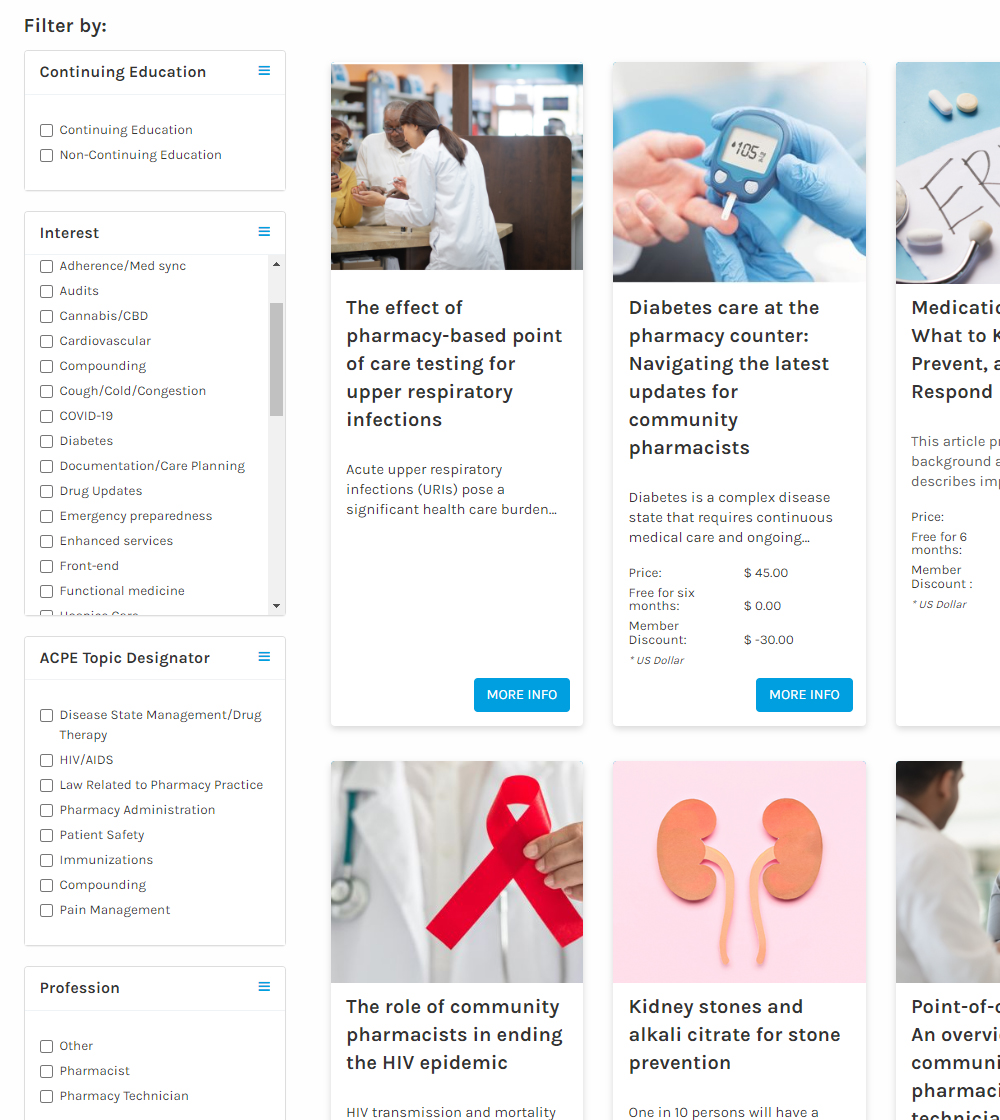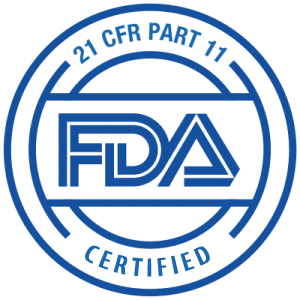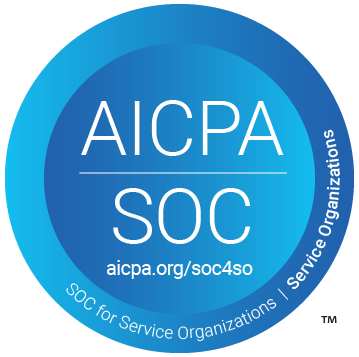
Measuring Success: Key Performance Indicators (KPIs) for Training Programs
Thinking Cap Blog | 2023-11-02
Tracking Key Performance Indicators (KPIs) provides valuable insights into the effectiveness of your training programs, allowing you to identify areas of success and areas needing improvement.
Start making data-driven decisions, better allocate resources, and improve your training content and strategies to meet organizational goals and learner needs better.
Why do we track KPIs?
There are many reasons to identify and start tracking your organization’s KPIs.
Identify Performance Gaps
KPI tracking allows you to pinpoint areas where learners are underperforming or struggling, helping you target specific content or modules for improvement and ensuring that training aligns with organizational standards.
Enhance Content Relevance
By analyzing KPIs, you can determine which training materials and modules are most relevant and engaging to your audience, allowing you to optimize content and keep learners motivated.
Customize Training Content
KPI data enables the customization of course content and learning paths, tailoring training experiences to individual needs and skill levels, which leads to more effective and efficient learning.
Optimize Resource Allocation
Efficient allocation of resources, including time and budget, is possible by focusing on what works and eliminating less effective training components, maximizing the program's overall impact.
Evaluate Trainer Performance
KPIs provide insights into the effectiveness of trainers and instructors, allowing for targeted coaching and professional development to enhance the quality of instruction.
Align Training with Organizational Goals
Tracking KPIs ensures that your training program remains aligned with the evolving needs and strategic objectives of your organization, contributing to the overall success and growth of the business.
Selecting which metrics to track will depend on the nature and goals of your training program. Below is a list of some suggested KPIs.
Measures the frequency of learner logins to the LMS.
1. User Engagement
Benchmark:
A monthly login rate of 80% or higher is a good target.
Example:
90% of registered learners logged into the LMS at least once in the past month.
Tip to Improve:
Encourage consistent use by sending regular email reminders about upcoming courses and offering rewards for engagement.
Find more information on Thinking Cap’s many notifications.
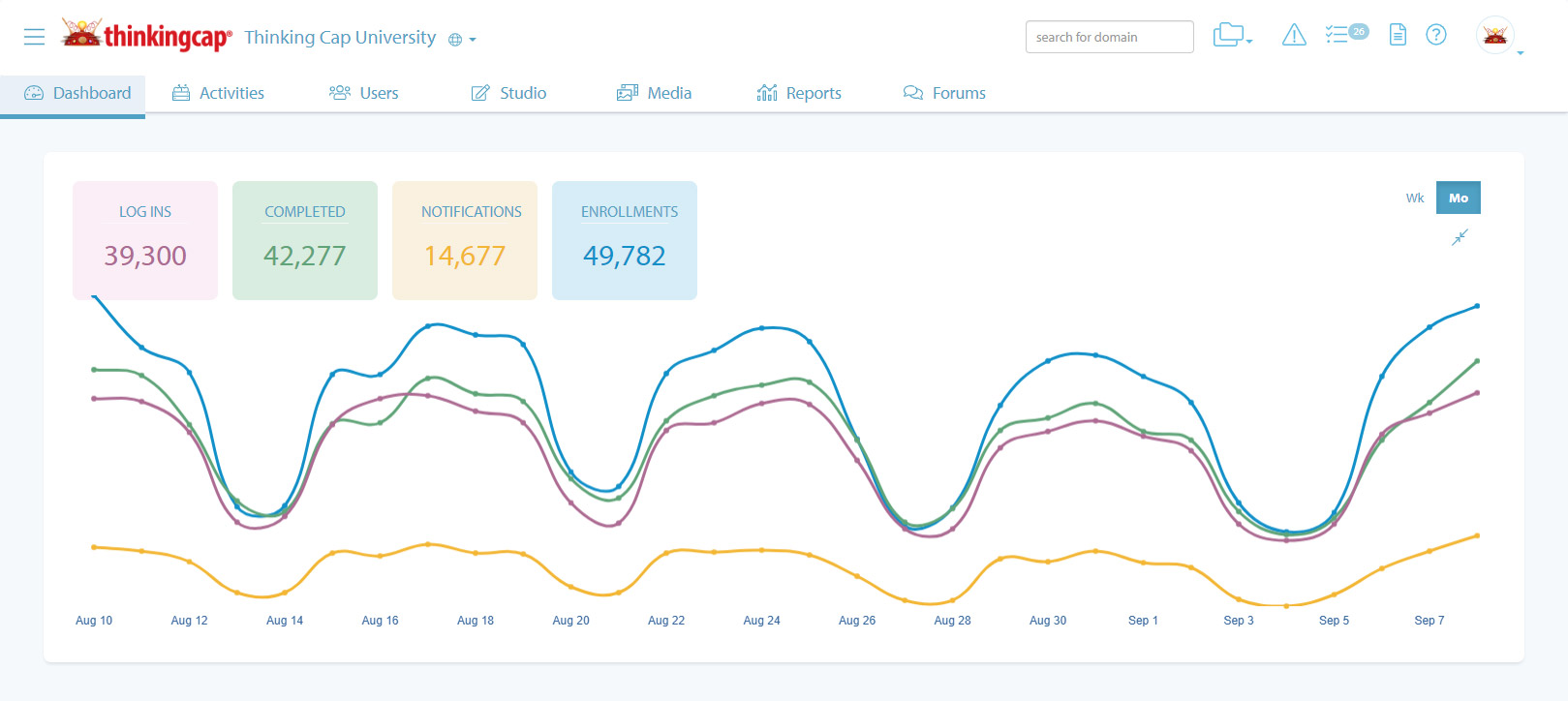
The percentage of learners who successfully finish a course.
2. Course Completion Rate
Benchmark:
A course completion rate of 80% is considered a reasonable benchmark.
Example:
85% of enrolled employees completed the compliance training course.
Tip to Improve:
Create a completion threshold to alert you when it dips below your target. Also, create engaging content, and provide additional motivations such as certificates, badges, credits and learning points.
Find more information on Thinking Cap’s certificates, credits, and badging.
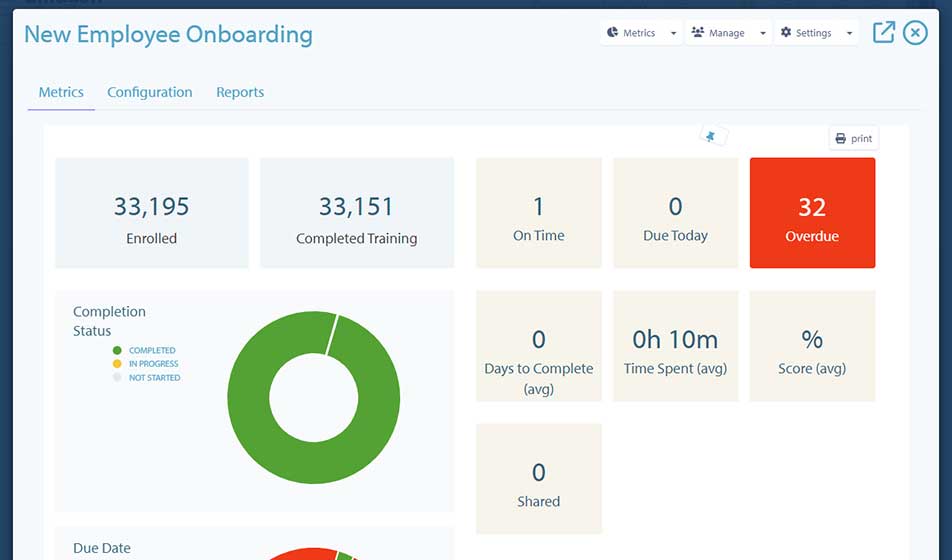
Measures the average performance of learners in assessments or quizzes.
3. Assessment Scores
Benchmark:
Aim for an average score of 80% or higher.
Example:
The average score on the final quiz for the safety training module is 87%.
Tip to Improve:
Offer feedback on incorrect answers, provide opportunities for re-taking assessments, and ensure clarity in questions.
Find more information on Thinking Cap’s many assessment options.
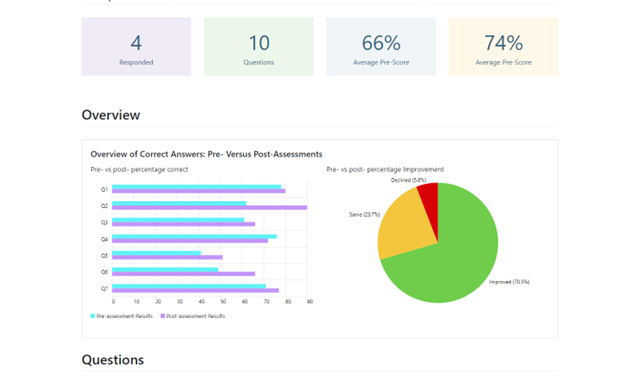
Tracks the percentage of completed modules or courses compared to those started.
4. Learner Progress
Benchmark:
Strive for a completion rate of 70-80% or more.
Example:
75% of learners who started Module 1 went on to complete it.
Tip to Improve:
Simplify course navigation, provide clear learning paths, and offer guidance on where to start.
Find more information on Thinking Cap’s customized learner experience and learning path options.
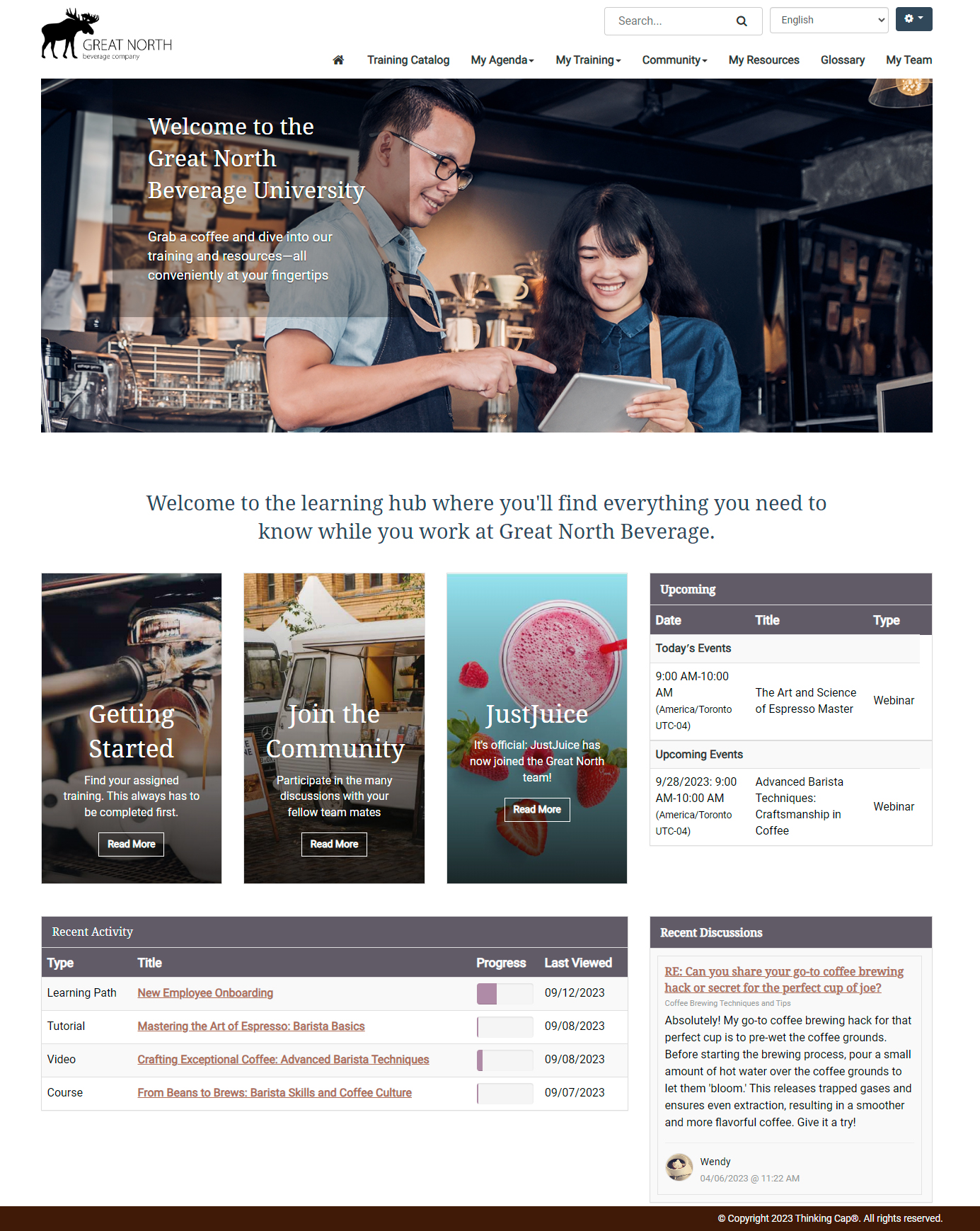
Gauges learner satisfaction through ratings and surveys.
4. User Feedback and Satisfaction
Benchmark:
Aim for a satisfaction rating of 4 out of 5 or higher.
Example:
The LMS received an average satisfaction rating of 4.2 out of 5 in the latest user survey.
Tip to Improve:
Act on user feedback, make improvements based on suggestions, and communicate changes to users.
Find more information on Thinking Cap’s survey activity and feedback options.
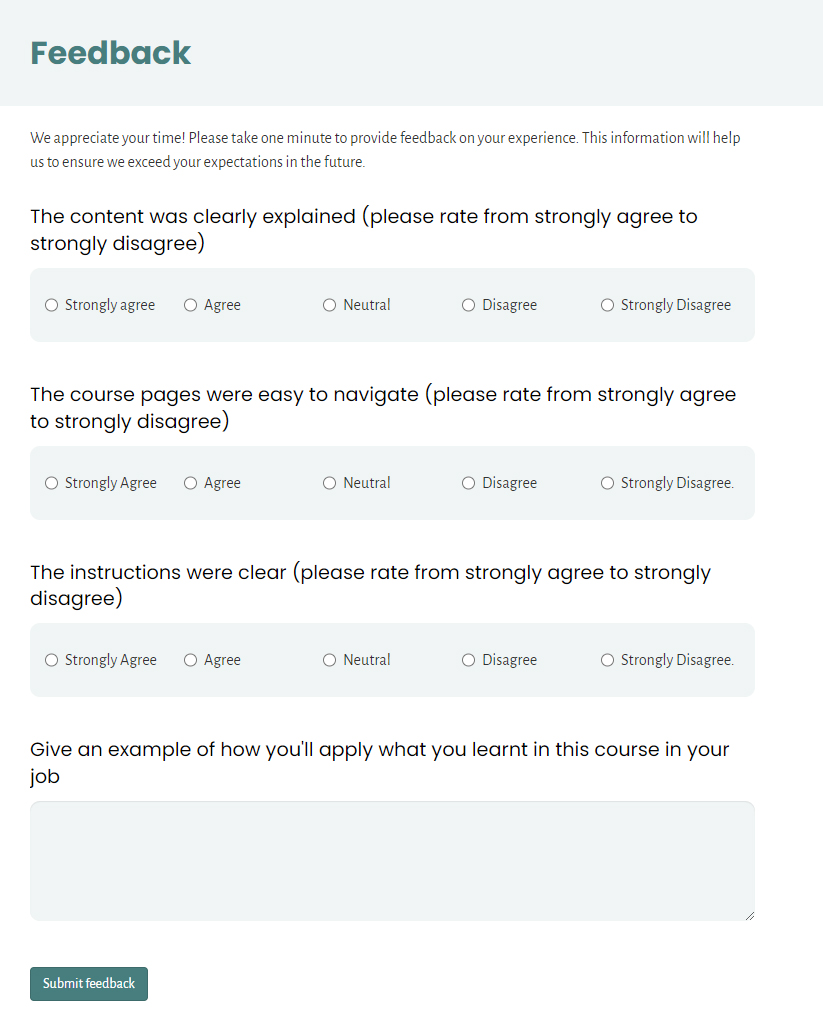
Tracks which content is most and least frequently accessed within the LMS.
5. Content Usage
Benchmark:
Ensure a balanced distribution of content usage with key resources frequently accessed.
Example:
The company's onboarding video is the most accessed resource, with 95% of new hires viewing it.
Tip to Improve:
Promote underutilized resources, create engaging content, and keep content up-to-date.
Find more information on Thinking Cap’s many learning activities supported.
Assesses the return on investment from LMS implementation, considering costs and benefits.
6. Training ROI (Return on Investment)
Benchmark:
A positive ROI is the goal, indicating that the benefits outweigh the costs.
Example:
The organization saved $50,000 in training expenses after implementing the LMS, resulting in a positive ROI.
Tip to Improve:
Continuously assess the impact on costs and productivity to identify areas for improvement.
Find more information on Thinking Cap’s many reporting options.

Measures the percentage of employees meeting compliance or certification requirements.
7. Compliance and Certification Rates
Benchmark:
Achieving 90-95% or higher compliance rates is a common goal for regulated industries.
Example:
92% of employees completed the mandatory cybersecurity training, meeting compliance standards.
Tip to Improve:
Offer regular compliance reminders, automate certification tracking, and provide ongoing compliance training.
Find more information on Thinking Cap’s many certification and certificate options.
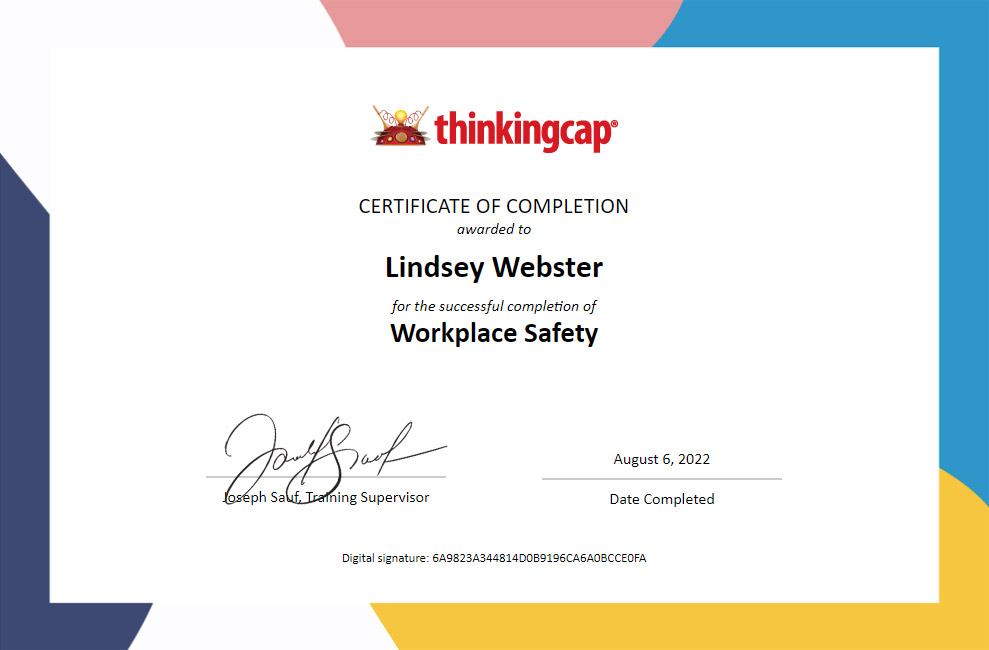
Measures the average response and resolution times for support tickets or learner issues.
8. Support and Issue Resolution Time
Benchmark:
Strive for prompt responses and resolutions, ideally within 24-48 hours.
Example:
Streamline support processes, provide self-help resources, and prioritize urgent issues for quicker resolution.
Tip to Improve:
Offer regular compliance reminders, automate certification tracking, and provide ongoing compliance training.
Find more information on Thinking Cap’s Support services.

Embracing the Future of Work
LMS software is a vital investment in remote team success, offering a virtual space for learning and collaboration. It plays a crucial role in fostering growth and cohesion among distributed teams, making it a key asset as organizations adapt to remote work challenges and opportunities.
Are you ready to embrace the future of work? Take the next step in empowering your distributed workforce with the support of cutting-edge LMS technology. Request a demo of your solutions today and discover how we can transform the way your organization learns, grows, and thrives in the digital age. Join us in shaping the future of remote work with the power of LMS software. Request your demo now and unlock the potential of your remote teams.
Request a personalized demoShare this article

